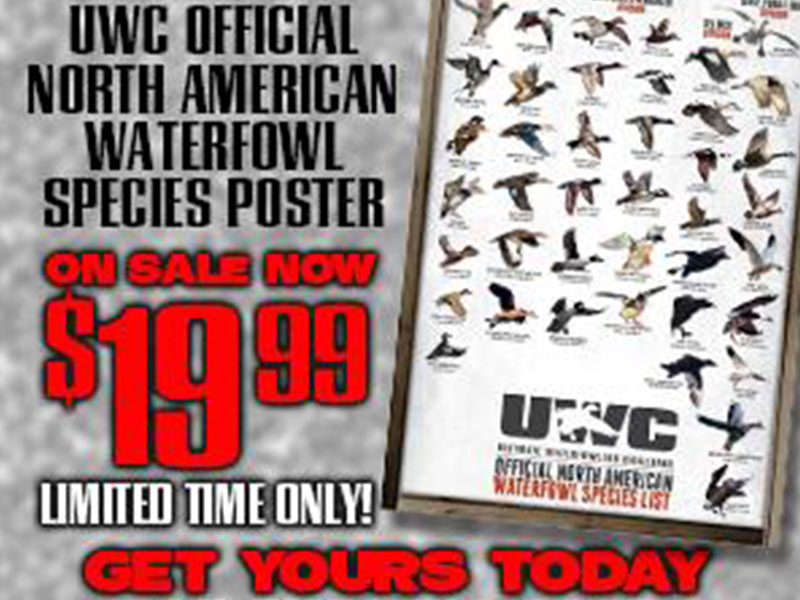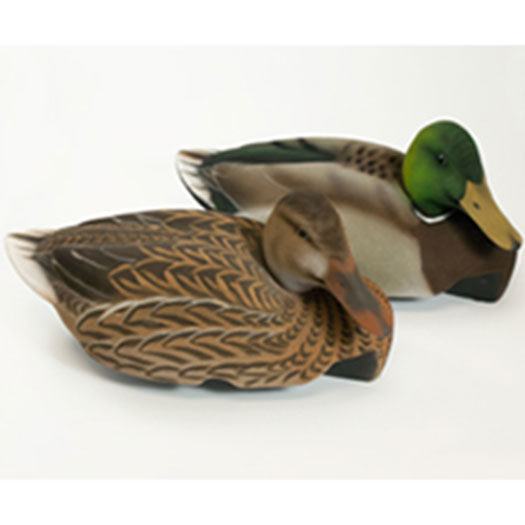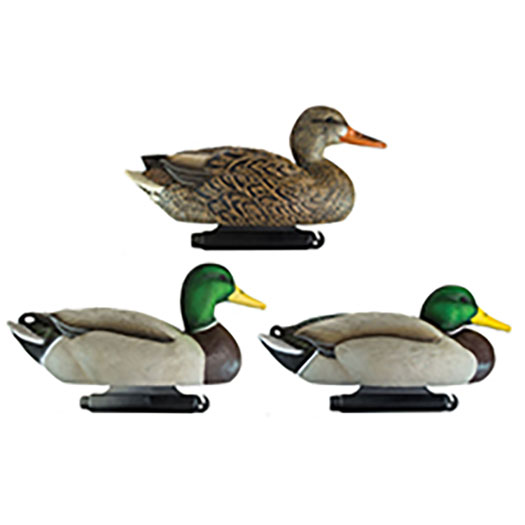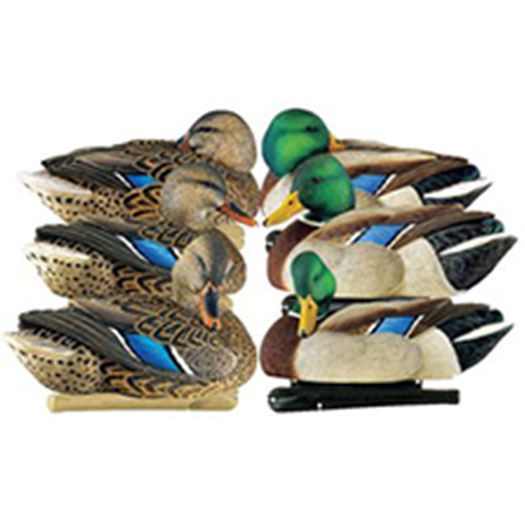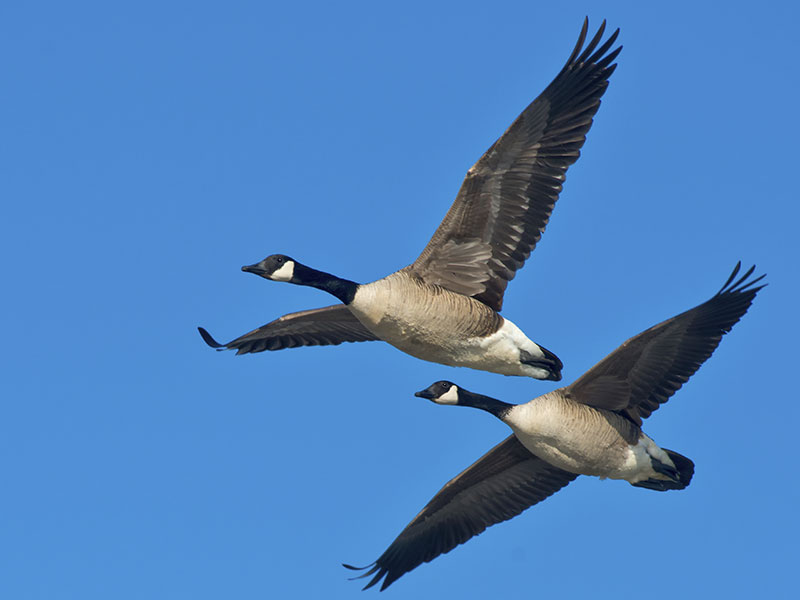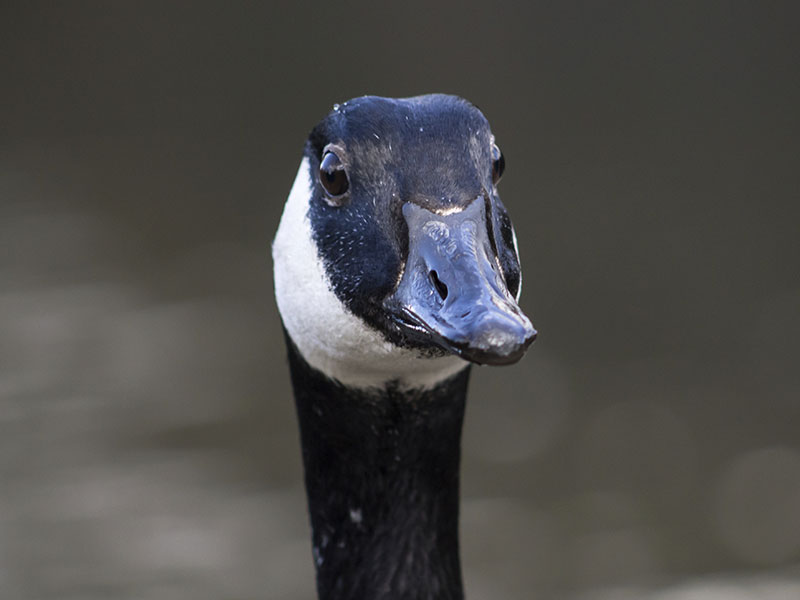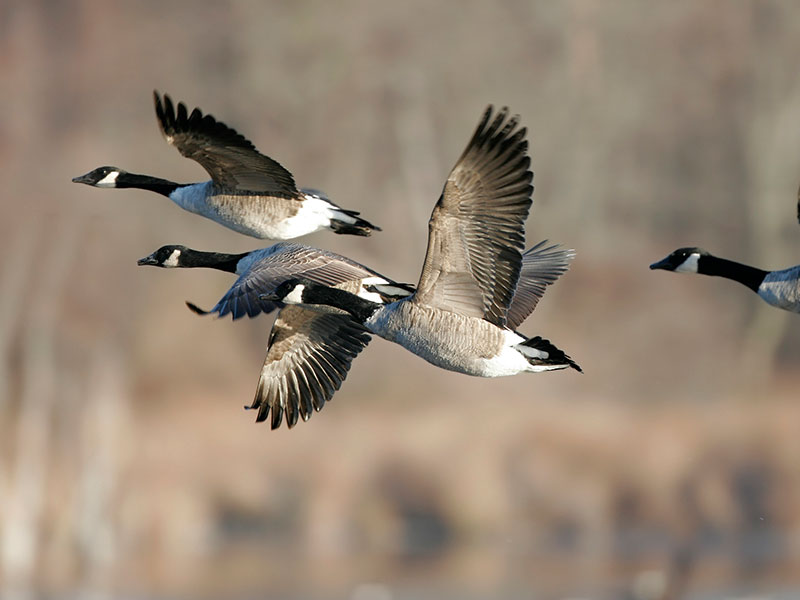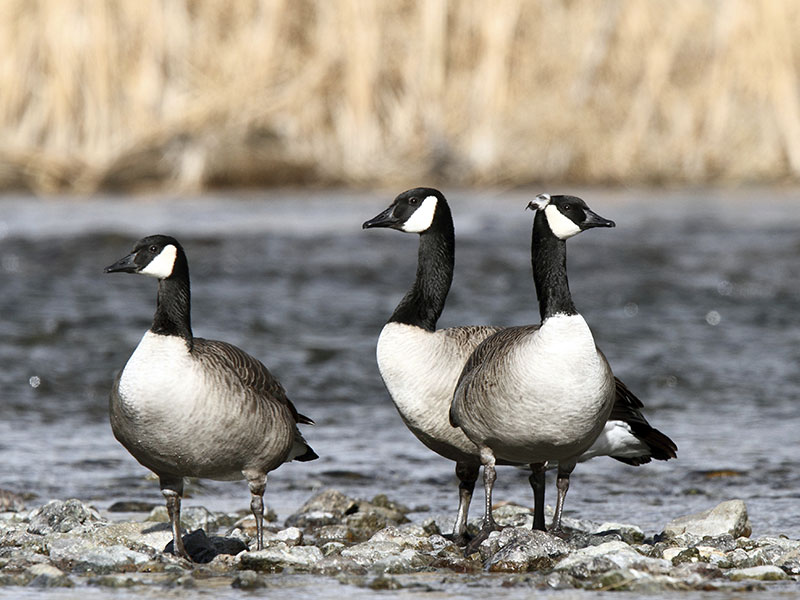Canada Goose Hunting
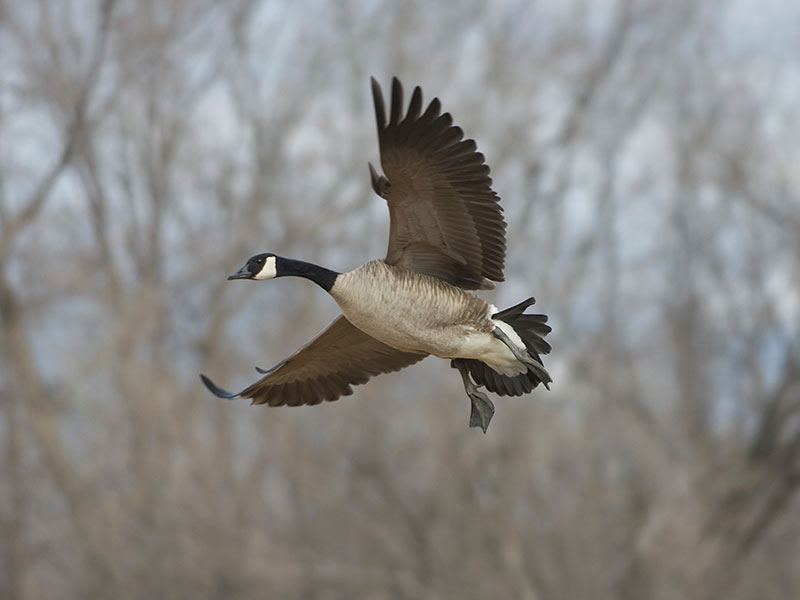
CANADA GOOSE
Branta Canadensis
Lifespan: 24 years on average (Adult)
Higher Classification: Anserinae
Wingspan: 50-66.9 in (Adult)
Length: 29.9-43.3 in (Adult)
Avg Weight: M 6-13 lbs, F 6-11 lbs
RELATED NAMES
- Honker
- Canada
CANADA GEESE THAT FALL UNDER THIS CATEGORY
- Atlantic Canada Goose
- Dusky Canada Goose
- Giant Canada Goose
- Interior Canada Goose
- Lesser Canada Goose
- Vancouver Canada Goose
- Western Canada Goose
NOTE- Canada Goose and Cackling Canada Goose – Due to the fact that there are 7 different sub species of Canada Geese and 4 different sub species of Cackling Canada Geese, we have elected to simplify these into two categories- Canada Geese and Cackling Canada Geese. To distinguish the difference between the two, there is two different criteria to go off of. Any Canada Goose weighing more than 6 pounds will fall under the Canada Goose species. Any Canada Goose weighing under 6 pounds will fall under the Cackling Canada Goose species. The second criteria is the goose’s bill. A Cackling Canada Goose will have a short triangular bill while a Canada Goose will have a more elongated bill.
LOOKING TO BOOK A WORLD CLASS CANADA GOOSE HUNTING ADVENTURE?
DESTINATION #3:
SASKATCHEWAN GEESE & CRANES
Location: WESTERN, SASKATCHEWAN
Hunt Package: Click here for pricing
Featured Waterfowl Species: SANDHILL CRANES, SPECKS, SNOWS, HONKERS, MALLARDS
Possession Limits: 8 DUCKS, 8 DARK GEESE, 5 CRANES, 20 SNOWS / POSS: 3 X’S DAILY
HUNTING TIPS & TACTICS
Greater Canada Geese have become one of the most popular species of waterfowl and one of the most exciting forms of waterfowl hunting across almost every state and province in North America. A true success story from an ecological standpoint- a species once nearing extinction in the early 70’s has now flourished and become an overabundance in most states, to the point of being a nuisance.
What makes this species of waterfowl so popular to hunt? For some it is the fact that with the amount of Canada Geese available to hunt in every state, they provide an ample amount of opportunity, along with hunting seasons and bag limits being increased significantly over the past decade. But for many, it is the interaction that happens between the hunter and the prey.
The Greater Canada Goose is a social and vocal bird that leaves itself open to being deceived by competent callers and large decoy spreads. Over the past 20 years the Canada Goose decoy market has also exploded. During the early to mid ‘80s most hunters used homemade decoys. In the early ‘90s the massive oversized G and H shell decoys ruled the market, until the full body decoy took hold with the Big Foot Goose decoys. At the turn of the century full body decoy companies started popping up everywhere, to the point that every year 2 or 3 new decoy companies appear. This is happening for a reason. Field hunting the Greater Canada Goose can be the most rewarding waterfowl hunting experience there is, especially during the early season and during the peak of the migration.
Spreads of 6–10 dozen goose decoys are the norm these days and it seems like the higher quality decoy is better. Have the geese wised up? The answer is….Maybe.
On some days it seems the birds will decoy into any sort of spread a hunter may have out, but late in the year, in high pressured areas, the better the decoy spread, the better the success rate- assuming everything else is in place. These specific details include: being set up on the “X”, hidden well and decent calling skills. In high pressured hunting areas, mistakes are the number one cause for birds to flare off a spread. Making sure that all bases are covered is the number one reason for success. Putting time in before the hunt to scout out the best “Feeder” fields and making sure the blinds are covered up properly before the birds arrive can be more important than having a large spread of quality decoys. In fact using a smaller, “Micro Spread” of 1–2 dozen quality decoys can be more effective in certain situations than having over one-hundred decoys out, especially when there are large decoy spreads with hunters in every field around the area.
How about hunting over water? This also can be a very productive method of hunting the Greater Canada Goose, using only 6–24 floater goose decoys. Be very careful not to blow the birds off of their roost, this is their home, and they will leave the area, leaving no chance for a second hunt. Another factor to consider when hunting water is to pattern the birds before the hunt; many times Geese will use a loafing pond in the afternoon and not come back to the roost pond until after dark leaving the hunters waiting for the birds until the very last minute of the day, only to see them arrive back to the water after shooting hours.
There is nothing more rewarding than turning a flock of Canada Geese in midair and having them land, feet down, ten feet from your blind in the middle of your decoy spread. It is actually addicting for some hunters. It just takes practice, practice, practice!
UWC OFFICIAL NORTH AMERICAN WATERFOWL SPECIES POSTER
$17.99
The UWC has put together a beautiful 19″ x 27″ Official North American Waterfowl Species laminated poster that showcases all 41 of the different waterfowl species that inhabit the lands and waters of North America!
Each waterfowl species listed in The UWC Waterfowl Species Poster comes with the common and scientific name for proper waterfowl identification.
RECOMMENDED DECOYS
UWC OFFICIAL SPECIES LIST

CANADA GOOSE
Branta Canadensis
Lifespan: 24 years on average (Adult)
Higher Classification: Anserinae
Wingspan: 50-66.9 in (Adult)
Length: 29.9-43.3 in (Adult)
Avg Weight: M 6-13 lbs, F 6-11 lbs
RELATED NAMES
- Honker
- Canada
CANADA GEESE THAT FALL UNDER THIS CATEGORY
- Atlantic Canada Goose
- Dusky Canada Goose
- Giant Canada Goose
- Interior Canada Goose
- Lesser Canada Goose
- Vancouver Canada Goose
- Western Canada Goose
NOTE- Canada Goose and Cackling Canada Goose – Due to the fact that there are 7 different sub species of Canada Geese and 4 different sub species of Cackling Canada Geese, we have elected to simplify these into two categories- Canada Geese and Cackling Canada Geese. To distinguish the difference between the two, there is two different criteria to go off of. Any Canada Goose weighing more than 6 pounds will fall under the Canada Goose species. Any Canada Goose weighing under 6 pounds will fall under the Cackling Canada Goose species. The second criteria is the goose’s bill. A Cackling Canada Goose will have a short triangular bill while a Canada Goose will have a more elongated bill.
LOOKING TO BOOK A WORLD CLASS CANADA GOOSE HUNTING ADVENTURE?
DESTINATION #3:
SASKATCHEWAN GEESE & CRANES
Location: WESTERN, SASKATCHEWAN
Hunt Package: Click here for pricing
Featured Waterfowl Species: SANDHILL CRANES, SPECKS, SNOWS, HONKERS, MALLARDS
Possession Limits: 8 DUCKS, 8 DARK GEESE, 5 CRANES, 20 SNOWS / POSS: 3 X’S DAILY
HUNTING TIPS & TACTICS
Greater Canada Geese have become one of the most popular species of waterfowl and one of the most exciting forms of waterfowl hunting across almost every state and province in North America. A true success story from an ecological standpoint- a species once nearing extinction in the early 70’s has now flourished and become an overabundance in most states, to the point of being a nuisance.
What makes this species of waterfowl so popular to hunt? For some it is the fact that with the amount of Canada Geese available to hunt in every state, they provide an ample amount of opportunity, along with hunting seasons and bag limits being increased significantly over the past decade. But for many, it is the interaction that happens between the hunter and the prey.
The Greater Canada Goose is a social and vocal bird that leaves itself open to being deceived by competent callers and large decoy spreads. Over the past 20 years the Canada Goose decoy market has also exploded. During the early to mid ‘80s most hunters used homemade decoys. In the early ‘90s the massive oversized G and H shell decoys ruled the market, until the full body decoy took hold with the Big Foot Goose decoys. At the turn of the century full body decoy companies started popping up everywhere, to the point that every year 2 or 3 new decoy companies appear. This is happening for a reason. Field hunting the Greater Canada Goose can be the most rewarding waterfowl hunting experience there is, especially during the early season and during the peak of the migration.
Spreads of 6–10 dozen goose decoys are the norm these days and it seems like the higher quality decoy is better. Have the geese wised up? The answer is….Maybe.
On some days it seems the birds will decoy into any sort of spread a hunter may have out, but late in the year, in high pressured areas, the better the decoy spread, the better the success rate- assuming everything else is in place. These specific details include: being set up on the “X”, hidden well and decent calling skills. In high pressured hunting areas, mistakes are the number one cause for birds to flare off a spread. Making sure that all bases are covered is the number one reason for success. Putting time in before the hunt to scout out the best “Feeder” fields and making sure the blinds are covered up properly before the birds arrive can be more important than having a large spread of quality decoys. In fact using a smaller, “Micro Spread” of 1–2 dozen quality decoys can be more effective in certain situations than having over one-hundred decoys out, especially when there are large decoy spreads with hunters in every field around the area.
How about hunting over water? This also can be a very productive method of hunting the Greater Canada Goose, using only 6–24 floater goose decoys. Be very careful not to blow the birds off of their roost, this is their home, and they will leave the area, leaving no chance for a second hunt. Another factor to consider when hunting water is to pattern the birds before the hunt; many times Geese will use a loafing pond in the afternoon and not come back to the roost pond until after dark leaving the hunters waiting for the birds until the very last minute of the day, only to see them arrive back to the water after shooting hours.
There is nothing more rewarding than turning a flock of Canada Geese in midair and having them land, feet down, ten feet from your blind in the middle of your decoy spread. It is actually addicting for some hunters. It just takes practice, practice, practice!
UWC OFFICIAL NORTH AMERICAN WATERFOWL SPECIES POSTER
$17.99
The UWC has put together a beautiful 19″ x 27″ Official North American Waterfowl Species laminated poster that showcases all 41 of the different waterfowl species that inhabit the lands and waters of North America!
Each waterfowl species listed in The UWC Waterfowl Species Poster comes with the common and scientific name for proper waterfowl identification.

